If you follow TCEA’s TechNotes blog, you’ve probably noticed that I really love creating digital breakouts for teachers across Texas, the United States, and the world. I receive lots of emails requesting the answers, but every once in a while, I receive questions like these:
“I don’t see the part where the students solve the clues. I see the facts and the Google form for submitting answers, but not the clues to solve. What am I missing?”
“Where is the information for the kids to read?”
“I see the Digital Breakout Activity; however, I do not see instructions for where to find the needed codes.“
If you’re new to digital breakouts or find yourself scratching your head about how they’re solved, here are the answers to all your questions! Let’s dive into the ins and outs of digital breakouts.
Digital Breakout FAQs
What exactly is an educational breakout?
James Sanders and Mark Hammons formed Breakout EDU in the spring of 2015. In a Breakout EDU game, learners solve a series of puzzles to open a locked box. Each game focuses on teaching critical thinking, teamwork, and complex problem-solving. Breakout EDU has evolved into a subscription-priced membership that offers physical kits with tools like invisible ink pens, various locks, and UV flashlights, as well as digital and hybrid game options.
What is a digital breakout?
A digital breakout does not require a physical box and locks. Instead, this type of breakout needs a Google Site page. The page contains images, text, hidden hyperlinks that students can use to solve digital puzzles, and an embedded Google Form for providing the breakout locks. A solver submits the answers on the Google Form to “break out.” There are no explicit directions for a digital breakout; clues are found scattered through the page in text, images, and links. You just have to jump in and start!
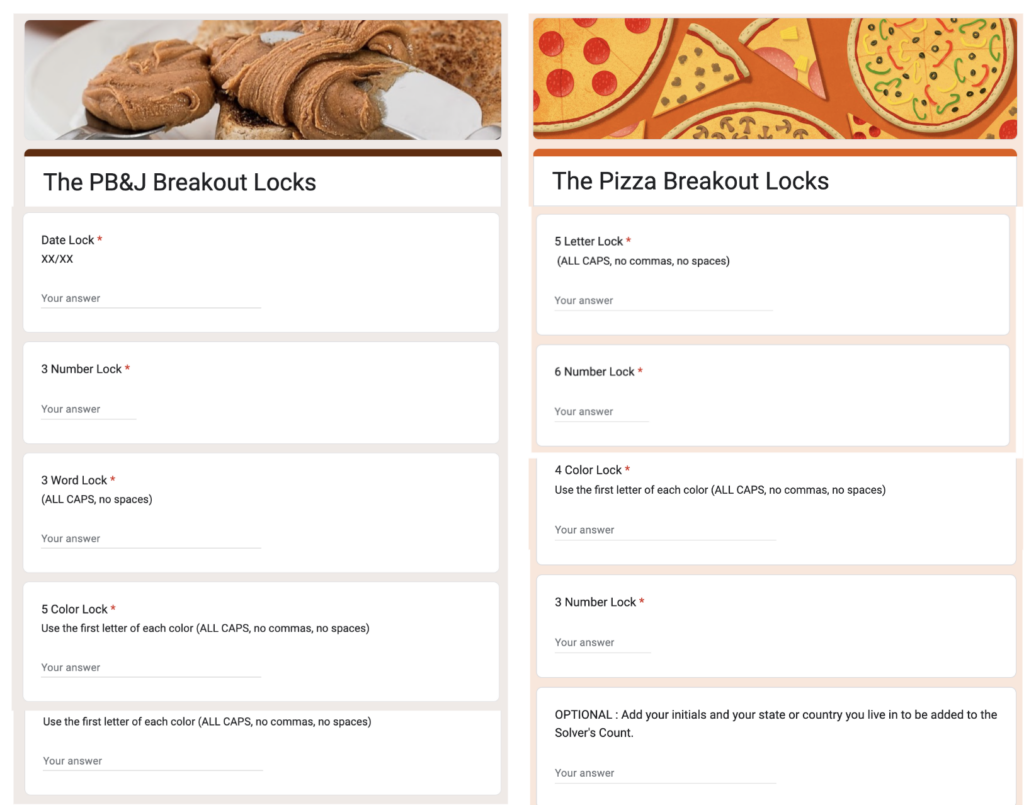
Where are the questions to solve the locks?
A digital breakout is not set up as a question-and-answer format. Instead, a student or a team of students uses the information (images, text, and hidden hyperlinks) on the page to formulate guesses to answer locks. There can be clues scattered throughout the page such as bolded text, images that are linked, patterns, and more.
What are the most common locks?
- Direction: The digital breakouts I make use U for up, D for down, L for left, and R for right. Other digital breakouts can contain North, South, East, and West.
- Color: Use the first initial of each color word. For example, you would use R for red, G for Green, Pink or Purple would share the letter P, and so on.
- Number: Number locks usually contain 3-8 digits.
- Word: These can contain 1-3 words and are based on a prominent word seen throughout the page or an answer to a question.
- Letter: The lock answers are in all CAPS and will have 3-8 letters. Look for a puzzle or text that does not make a word!
- Date: Refer to the question description to see how the date should be entered: XX/XX or XX/XX/XX or XX/XX/XXXX.
- Shape: Use the first initial of each shape word: C for circle, R for rectangle, D for diamond, T for triangle, S for square, etc.
- Number/Shape This is my own creation of a lock! Look for an object you see a whole bunch of on the page. You will need to expand the Google Form so you can see the form header, and don’t forget the content from the hidden links. Shapes can be spheres, squares, stars, or perhaps circles. Keep count of how many shapes you spot, and this is the number you will use in the lock answer (e.g., 23STAR or 18SPHERE).
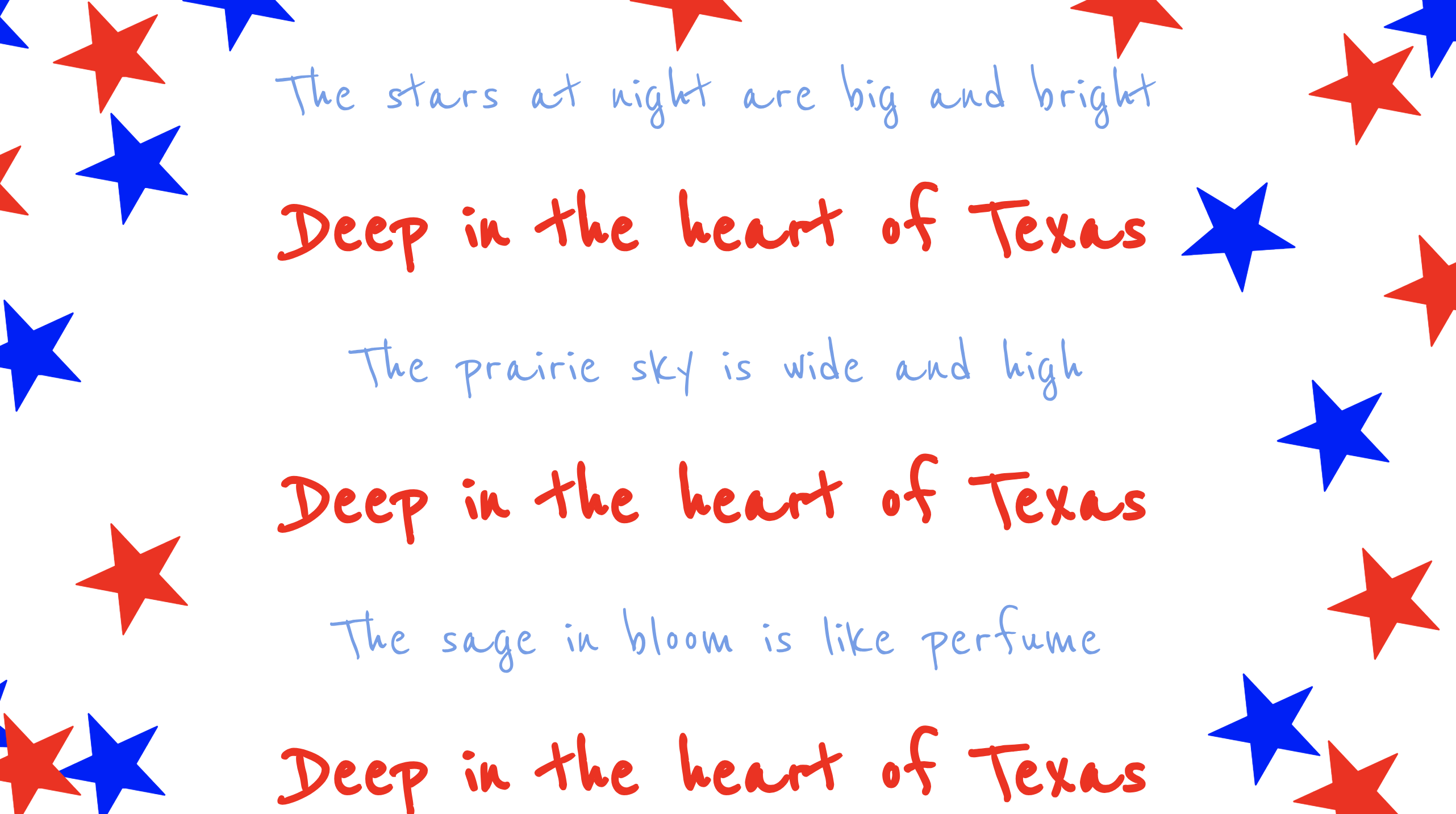
How do you enter the lock answers?
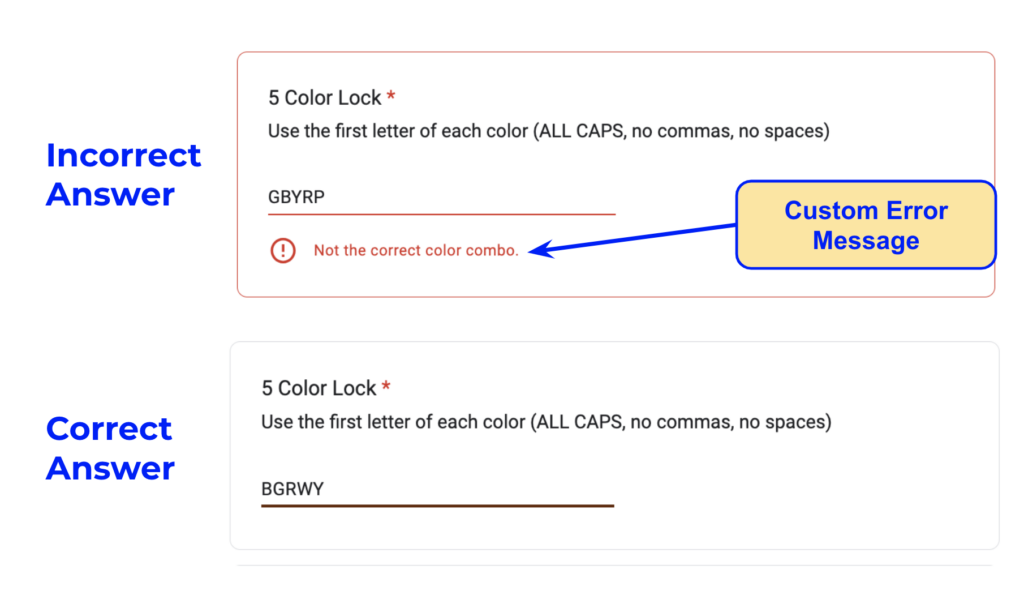
Students enter their answers into the Google Form embedded on the page. If an incorrect answer is entered, the form will display a message. As soon as the correct answer is entered, the custom error message will disappear. The Google Form cannot be submitted until all locks have been solved.
The Google Form does not collect email addresses. TCEA is not gathering any personal information when a breakout is being used.
TIP: In tackling a lock, FIRST type in a wrong answer and click on the question field, so it brings up the message. As soon as you input the correct answer the message will disappear.
How do I know my students have solved the breakout?

For privacy and security reasons, I am the only one who can access the responses for the breakouts I create. When ALL locks have been solved, the student will be able to submit the form. A confirmation message will be displayed with congratulations and a fun saying.
Since you do not have access to the backend of the Google Form to see the submissions, have students take a screenshot of the confirmation message, take a picture of themselves with the message, or simply show the confirmation message to you.
What is a Hall of Fame request?
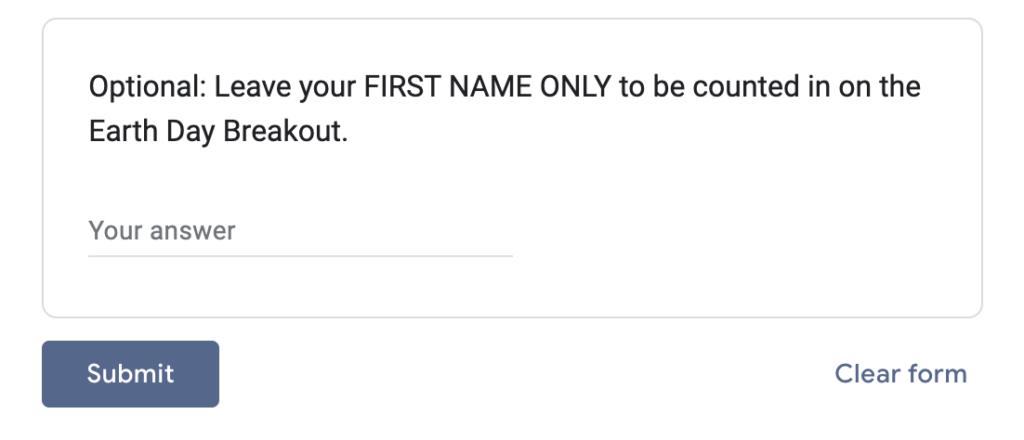
This field is not required to be filled out to submit the form. However, your students can either leave this field blank or add their first name only and their state or country. I included this so students can attach their names to their win for solving the breakout.
Am I the only one who is still puzzled by this whole thing?
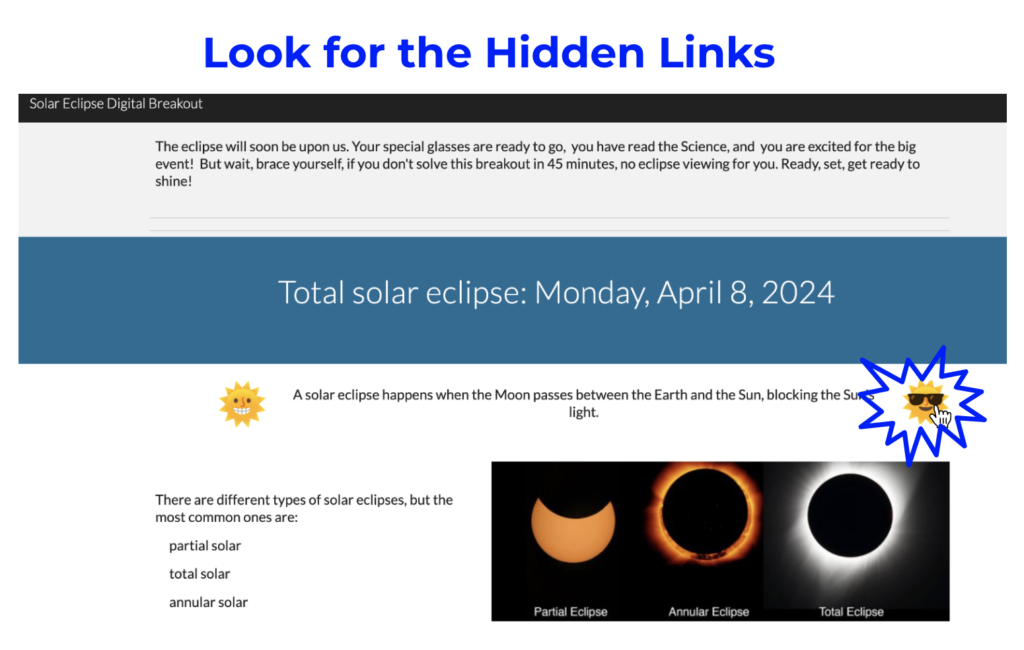
A digital breakout can be a little confusing at first because explicit directions are not provided. Here are a couple of things you can do to get started with one in the classroom.
- Always read through the list of LOCKS in the embedded Google Form first.
- Try working out a digital breakout as a class first to model possible lock-solving strategies. Think out loud with your students.
- It helps for students to work in pairs or small groups. Having two or more brains that process information differently can really help with finding answers.
- Hover over different parts of the page. Hidden links can lead to a hidden puzzle, which could be a maze, a poem, or a message.
- First, enter a wrong answer in the lock and as soon as you type the right answer, you can see the custom error message disappear.
Do you have any insider tips for solving your digital breakouts?
- I always try to include one or two hidden links for lock answers, and the hidden content is likely to be a lock answer.
- WYSIWYG is always in place. The order in which the clue is displayed on the page is the lock order. I never mix up or scramble text or images for an answer.
- If I think the lock needs another hint, I have been known to add another hint in the error message on the Google Form.
What age levels are best suited for your digital breakouts?
This is a difficult question to answer. I have had teachers use my breakouts with second graders all the way up to high school. I have even had college professors reach out for the answers. It depends on the reading level of your students and their experience with breakouts. I try to limit the amount of text I use in the content. No one wants to read a 100-200 word paragraph to look for a possible answer. I try to keep factual information to short bursts of text, lists, or labeled images. If in doubt, you can try it out yourelf to test the age-appropriateness of the breakout for your students.
How do you actually go about solving the locks?
My first tip is to have your students look at the locks listed in the Google Form. Then, start looking at the page for clues.
If you need a 4-Color Lock, look at the colors used on the page to see if any stand out. Or maybe there are color words used in sentences. For example, “Bluebonnets are the state flower of Texas. Have you heard the song, The Yellow Rose of Texas? The lone star on the Texas flag is white. The University of Texas logo is a burnt orange longhorn.” Your brain should be looking for some typs of grouping involving four colors.
If it is a Direction Lock you need to solve, look to see if there is a map or some kind of puzzle that has up, down, left or right embedded in the words. Or do you see arrows of any sort on the page?
Can you give me an example of the lock solving process?
Sure, here is the process I would use for finding a digital breakout lock answer for this image.
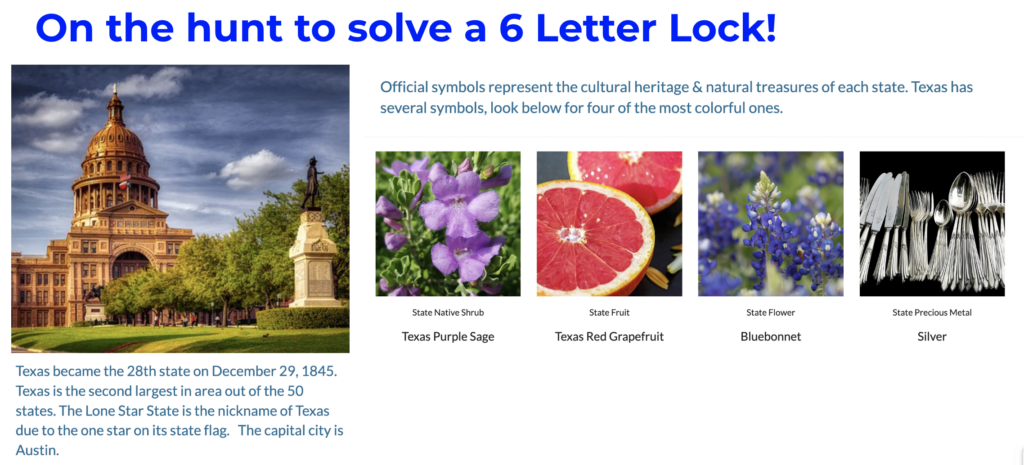
Let’s say I have a 6 Letter Lock on a digital breakout themed around the state of Texas.
First, I see an image of the capitol building and I read the state capital of Texas is Austin. Austin has 6 letters – so I try that. Not correct. So I read on to find more 6 letter words but I don’t want to try all the 6 letter words I find. So I peruse farther down on the website, and there is a section that is talking about state symbols. There is a group of state symbols pictures. Which word has exactly six letters? Could one of those state symbols be the answer? Well, “bluebonnet” and “grapefruit” are just too long; so, how about SILVER! Yes, the 6 Letter Lock is solved.
Is it alright to NOT solve a digital breakout?
I love this question. Yes, failure is acceptable! Of course, the catalyst is to break out, but failure should be celebrated. Life is not always going to be smooth sailing on paved roads. Sometimes you are on a road with a bunch of potholes, and sometimes we need help. The goal here is to collaborate, think, and use logic skills. I can bet some students, after failing the first time, will try even harder the next time.
Do you include distractors (Red Herrings)?
Usually, I will include at least one distractor in a digital breakout.
Do you have any other thoughts about your breakouts?
I do think your first breakout will be one of the hardest. It’s like picking the right lock in a room full of doors. There isn’t a method to solve the madness just yet. You probably feel like you are just guessing, and you are probably thinking, “This makes no sense. What am I even looking for?” But as you solve more and more breakouts, your technique for solving will get honed and polished. Just like with playing a sport or a musical instrument, you will get better with practice!
Where can I find your digital breakouts?
Here are all the digital breakouts I’ve made:
- Back-to-School Breakout
- Digital Citizenship Breakout
- Falling for Digital Breakouts
- The Boo Breakout
- Trick or Treat Digital Breakout
- Día de los Muertos Digital Breakout
- Gobble Gobble Breakout
- Merry Merry Breakout
- Chinese New Year Digital Breakout
- MLK Day Breakout
- Snowstorm Stumper Breakout
- Winter Digital Breakout for Beginners
- Winter Olympics Digital Breakout
- Valentine’s Day Digital Breakout
- Spring Digital Breakout
- Earth Day Digital Breakout
- Pizza Digital Breakout
- 50 States Digital Breakout (50 individual breakouts!)
- PB & J Digital Breakout
- Apollo 11 Moon Landing Digital Breakout
- Check out Digital Breakouts 101 for helpful tips and guidance.
I’m a teacher, where do I find the answers?
If you are a teacher, email me at preimers@tcea.org, and I will send you the answers to the digital breakout your working on with students. Remembering your professional contact information in your email signature helps speed the process as it tells me right away you are a bonafide educator, but I can usually spot student requests right off the bat.
Happy breaking out! Peggy


1 comment
Oh, boy! A digital breakout update from Peggy Reimers! This made my day. Thanks for all the reminders and new ideas.